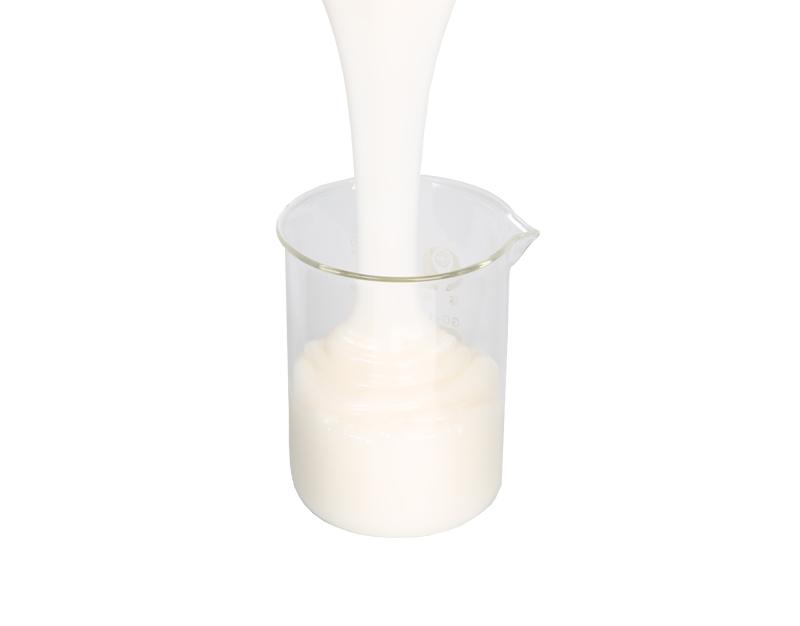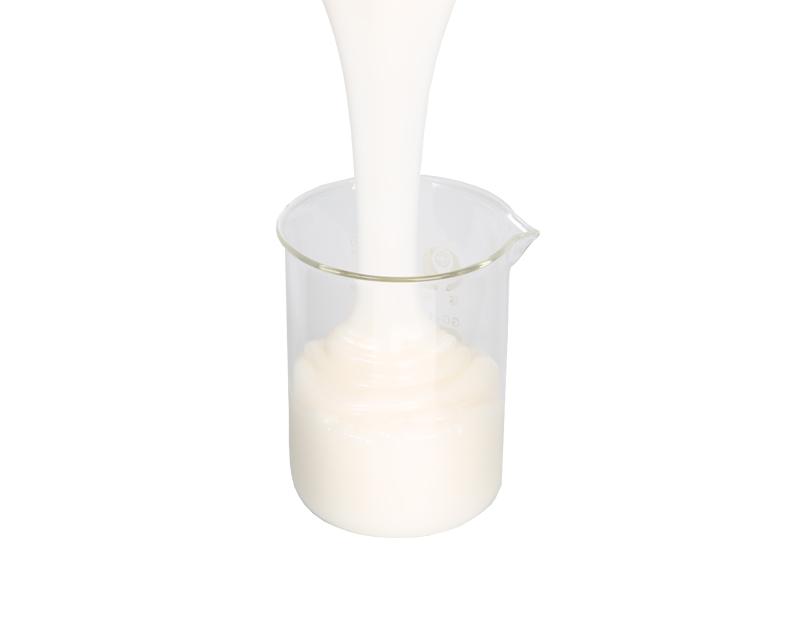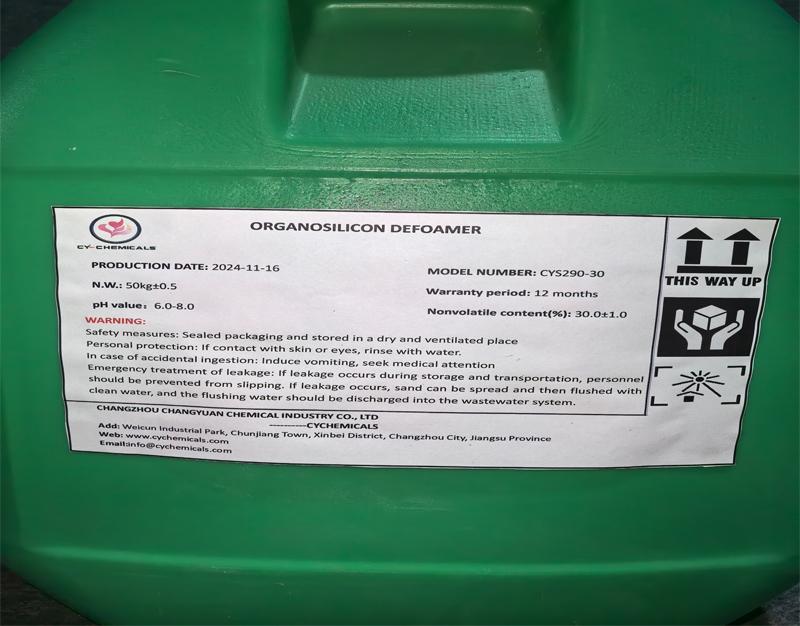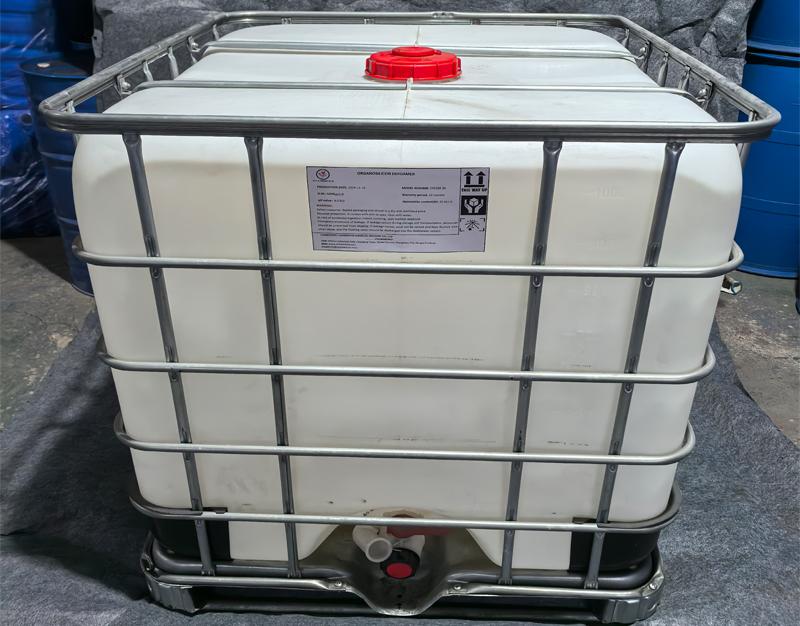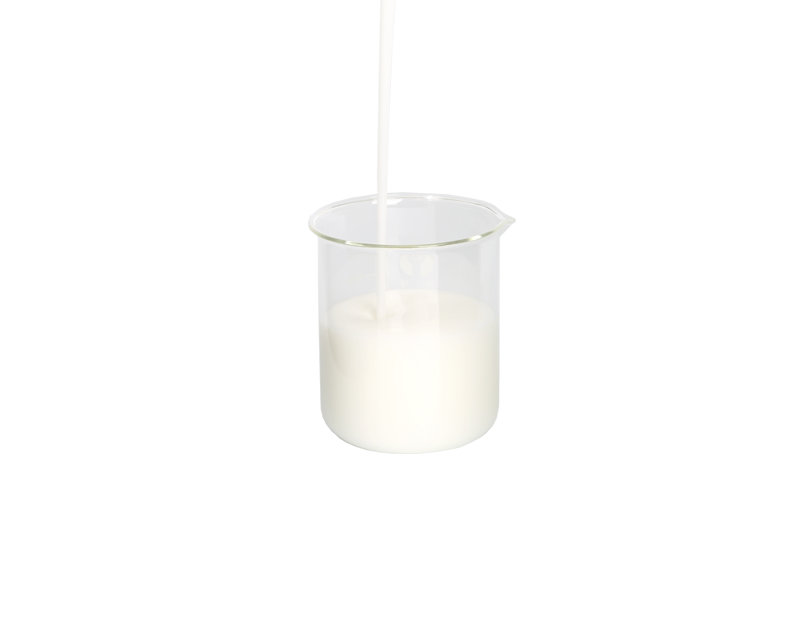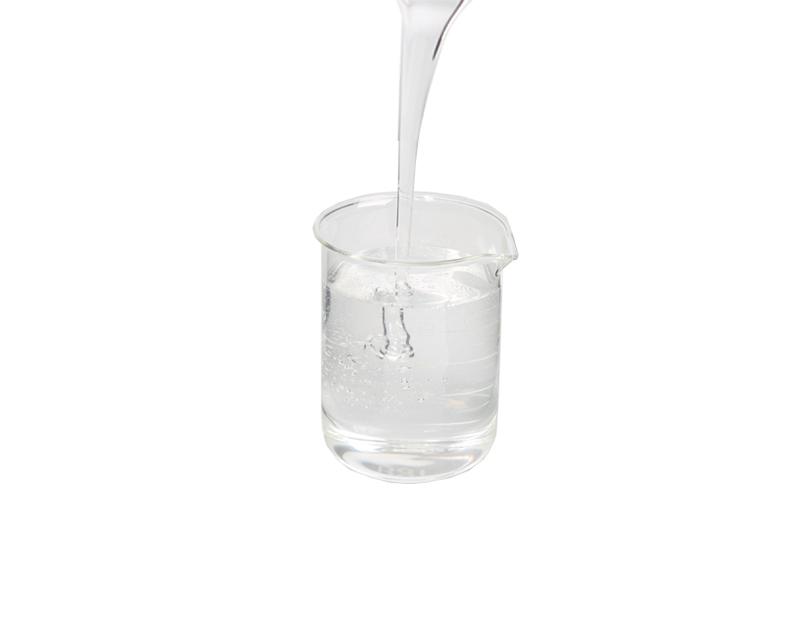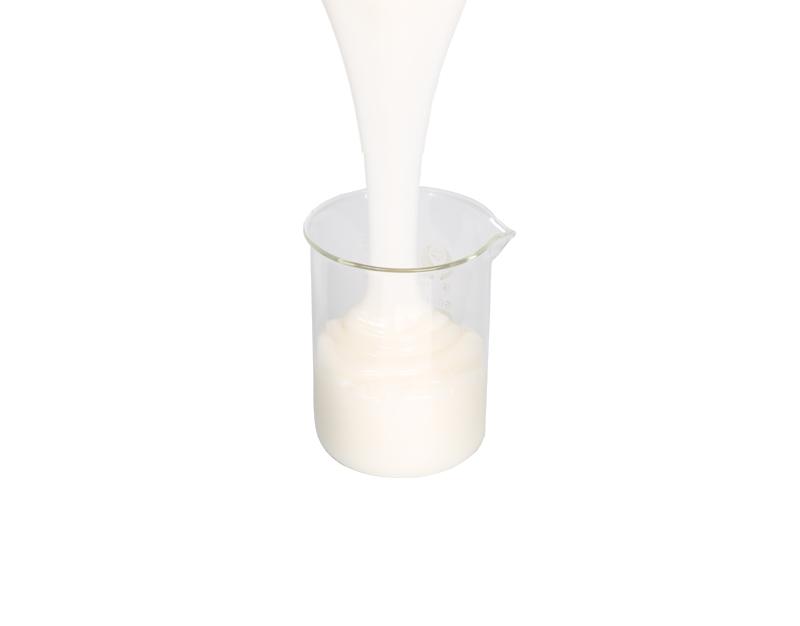- info@cychemicals.com
- +8613655695601
- Weicun Industrial Park, Chunjiang Town, Xinbei District, Changzhou City, Jiangsu Province
Location:Home > Product > Water Treatment Defoamer
Detailed Introduction:
Water Treatment Defoamer Guide
Foam, headache problem in water treatment processes, but often is the common and important problems that needs to be addressed to increase efficiency and provide safety and system integrity. Defoamers, or anti-foaming agents, are critical for controlling foam related problems. Let us discuss some common problems about water treatment defoamers:

1. What is a water treatment defoamer?
The water treatment defoamer is a chemical additive that reduces or prevents the formation of foam in water treatment systems. Foam can a arise from surfactants, organic compounds, or agitation, and from this point, defoamers work to disrupt the surface tension of the bubbles, thus dissipating them.
2. What is the harm in drinking the foam that forms in your water treatment systems?
Key Concerns of Foam in Water Treatment Systems Foam can pose serious challenges to water treatment systems, such as:
lOperational Efficiency Excessive foam can disrupt the ordinary functioning of pumps, filters, and other machinery.
lReduced Capacity: Foam takes up space in tanks, which lowers their capacity and efficiency.
lSafety Threats: Spilled foam may result in slippery surfaces that are risks to the staff.
lEnvironmental Concerns: Foam that escapes into the environment can breach regulations and impact surrounding ecosystems.
lQuality Issues: Persistent foam may reduce the quality of treated water, particularly when clarity and purity are essential.
3. How does defoamer work in water treatment?
Defoamers work by interrupting foam bubble surface tension. They act through one or more of the following mechanisms:
lSpreading Agent: Defoamers disperse on the surface and destabilize the walls of the bubbles, thus collapsing them.
lOil Based Solutions: Many defoamers are oil-based which disrupts the liquid-gas interface in the foam matrix.
lParticle Action: A few defoamers rely on solid particles to puncture bubble walls.
lSilicone-Based Agents: Silicone-based defoamers are commonly employed in huge areas because they can effectively disperse the foam.

4. What are the different types of defoamers used in water treatment?
Different kinds of defoamers are utilized in water treatment based on intended applications. Some of them include:
lSilicone based defoamers: These are extremely effective and commonly used surfactants, specifically in industrial and municipal water treatment systems.
lOil-Based: Formulated with natural or synthetic oils, commonly used in food-grade applications.
lWater Based Defoamers: These defoamers are eco-friendly and these are easy to clean.
lPowder Defoamers: These are typically used for dry applications such as powdered detergents and solid chemical treatments.
lPolymer-Based Defoamers: Polymer-based defoamers are one of the most versatile and effective in the high-temperature system.
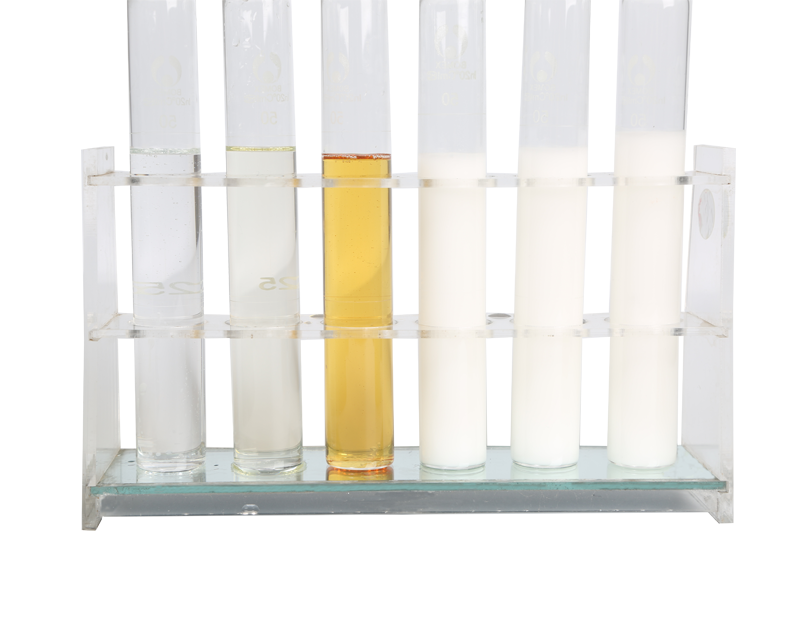
5. In which parts of water treatment systems are defoamers used?
Defoamers find application in multiple stages of water treatment like:
lAeration Basins: Avoidance of foaming due to biological treatment processes.
lClarifiers: Managing foam to keep water clear and treatment effective.
lCooling Towers: Minimizing carryover foam due to excessive water turbulence
lEffluent Treatment: Discharging treated water as per environment regulation without foam.
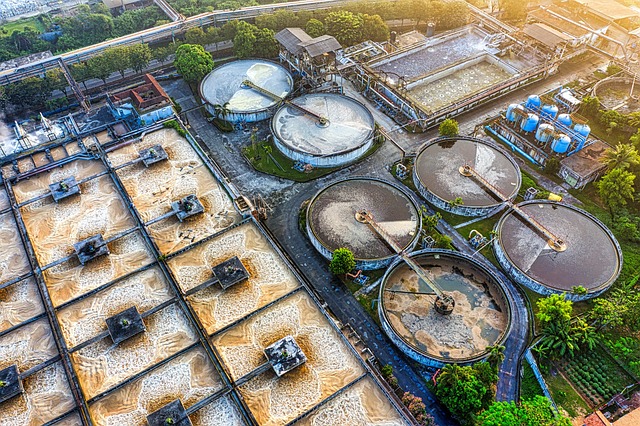
6. Are defoamers safe for the environment?
It is essential to select a defoamer approved for the particular application to comply with environmental regulations. Our main defoamers are formulated to be biodegradable.
For example, the core raw material of our silicone defoamers is polydimethylsiloxane(PDMS). When the high molecular weight PDMS polymer comes into contact with clay minerals in the soil, its siloxane backbone degrades into a lower molecular weight material - Me2Si(OH)2.
Then, dimethylsilanediol will further degrade, depending on the soil type. Whether through biodegradation in the soil or photodegradation in the atmosphere, free radicals are formed and free radical reactions occur. You can refer to the product’s Material Safety Data Sheet (MSDS) for specifics. Please do contact us and get this file.
7. How many defoamers should I add in my dispatch system?
Factors such as the following afect the required dose of a defoamer:
lFoam type: persistent or transient foam.
lSystem Size: Higher dosages may be required for larger systems.
lChemical Composition: Doses need to be adjusted based on water chemistry and the treatment objectives.
Based on our more than 30 years of experience in the defoamer industry, we will provide you with guidance on adding different amounts and types of defoamers.
8. Is usage of defoamers excessive?
Of course, excessive use of defoamers may cause the following problems:
lResidue Accumulation: Excess defoamer can leave residues that affect equipment performance.
lLess Effective: Overapplication can interfere with the effectiveness of other water treatment chemicals.
lEnvironmental Harm — Excess chemicals may lead to environmental damage if released into the environment inappropriately.
Please use the defoamer according to our recommended dosage. Excessive use will not be very effective and will cause a series of problems.
9. What factors should be considered when choosing the type of defoamer?
See below some of the factors to consider when selecting a defoamer:
lSystem Type: Industrial, municipal, or specialized applications such as cooling towers or wastewater treatment.
lFoam: Nature of foam: persistent or transient, its composition — what is in it, and where did it come from?
lCompatibility: Confirm that the defoamer is compatible with other treatment chemicals.
lRegulation Compliance: Make sure the defoamer does meet local regulation compliance.
lCost-Effectiveness: Select a defoamer that provides cost-effective value without sacrificing quality.
Different types of wastewater have different types of defoamers. For example, cationic wastewater is recommended to use polyether defoamers, while silicone defoamers can be used regardless of anions or cations. In addition, there are special defoamers to choose from.
Other chemical agents are also needed in wastewater treatment, such as flocculants, decolorizers, bacterial carbon sources, heavy metal capture agents, etc.
Therefore, you can provide us with your usage environment, and we will tell you how to choose a defoamer that suits you.
10. Can Defomers be used with other water treatment chemicals?
Yes, defoamers are formulated to be used in conjunction with other water treatment chemicals like coagulants, flocculants and biocides. However, as above said, it’s important to check for chemical compatibility to avoid unintended reactions or decreased effectiveness.
11. What is the comparison of silicone-based defoamers or oil-based defoamers?
lSilicone-Based Defoamers: Effective, durable, and suitable for a variety of industrial processes.
lOil-Based Defoamers: Less expensive, but may not have as high performance in extreme situations.
Each types has its advantages, and the choice depends on individual requirements.
12. How do I use defoamers in maintenance?
To ensure peak-defoamer/antifoaming performance:
lRoutinely cleaning and inspecting dosing equipment.
lFollow foam levels or defoamer dosing.
lTest system water regularly to ensure a proper chemical balance, just like the COD value, etc.
Conclusion
Ensuring efficiency, safety, and compliance in water treatment systems can rely heavily on water treatment defoamers. By choosing the right defoamer, following proper application instructions, and monitoring your system, you can effectively tackle foam and maintain smooth operations.
Previous : Defoamers for water treatment
Next :Last

